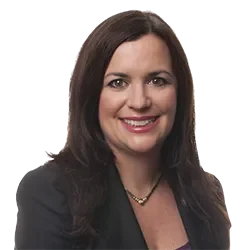ASAP
Another New York State Appellate Court Finds 24-Hour Non-Residential Home Care Attendants Must be Paid for Sleep and Meal Periods
A pair of New York state appellate decisions has serious implications for employers that offer 24-hour home care for clients by ruling that sleep and meal periods must be included in the hourly wages of home care attendants. On September 13, 2017, the Appellate Division (Second Department), in Andryeyeva v. New York Home Attendant Agency,1 upheld a trial court’s decision that certified a class of over 1,000 home care attendants who worked 24-hour shifts. In doing so, the court affirmed that sleep and meal periods had to be included in the hourly wages of home attendants who do not reside in the home of his or her client.2
This is the second appellate decision in New York to find that “non-residential” live-in home care attendants must be paid for every hour of a 24-hour shift, including sleep and meal periods. As previously reported,3 on April 11, 2017, in Tokhtaman v. Human Care, LLC, the Appellate Division (First Department) held the same: live-in home care attendants must be paid for every hour of a 24-hour shift regardless of sleep or meal periods.
The Industry Standard
Home care attendants working live-in shifts have historically been paid for 13 hours of a 24-hour shift in accordance with well-established guidance by the New York Department of Labor (NYDOL). A March 11, 2010 NYDOL Opinion Letter RO-090169, reiterated this guidance, interpreting the New York Labor Law (NYLL) as allowing third-party employers of 24-hour home care attendants to pay their employees for 13 hours of a 24-hour shift, provided the employee is afforded eight hours of sleep, five of which are uninterrupted, and three uninterrupted hours for meals (the so-called “13 hour rule”). Thus, home care agencies have historically paid home care attendants in accordance with the 13 hour rule.
The Legal Issue
The Second Department’s decision in Adryeyva rested on the language in the New York Wage Order applicable to home care attendants. The applicable provision, 12 NYCRR 142-2.1 (“Basic minimum hourly wage rate and allowance”), provides:
The minimum wage shall be paid for the time an employee is … required to be available for work at a place prescribed by the employer …. However, a residential employee – one who lives on the premises of the employer – shall not be deemed to be …required to be available for work…during his or her normal sleeping hours solely because he or she is required to be on call during such hours; or …at any other time when he or she is free to leave the place of employment.
In the March 11, 2010 NYDOL opinion letter, the NYDOL advised that “live-in employees,” whether or not they are “residential employees,” “must be paid not less than for thirteen hours per twenty-hour period provided that they are afforded at least eight hours for sleep and actually receive five hours of uninterrupted sleep, and that they are afforded three hours for meals.”
As the Second Department explained, “the construction given statutes and regulations by the agency responsible for their administration, if not irrational or unreasonable, should be upheld.”4 The Second Department agreed with its “colleagues” in the First Department in Tokhtaman “that the NYDOL’s interpretation is neither rational or reasonable, because it conflicts with the plain language of the Wage Order.”5 The court took issue with the NYDOL’s interpretation because:
the plaintiffs were required to be at the clients’ residences and were also required to perform services there if called upon to do so. To interpret that regulation to mean that the plaintiffs were not, during those nighttime hours, “required to be available for work” simply because it turned out that they were not called upon to perform services is contrary to the plain meaning of “available.”6
In sum, the court held that all members of the proposed class who were not residential employees (i.e., lived on the premises of the employer) were entitled to be paid the minimum wage for all 24 hours of their shifts, regardless of whether they were afforded opportunities for sleep and meals.
The Second Department did not address the remaining arguments presented by the defense and the two amici curiae, including the many public policy arguments asserted.
Implications
Andryeyeva and Tokhtaman may be appealed to New York’s highest court, the New York Court of Appeals. If upheld there, the effect of the decisions may be to significantly reduce the availability of 24-hour live-in care in New York State. The six-year statute of limitations on New York Labor Law claims could result in substantial back-pay liability, which could lead to many home care agencies closing their doors. This may result both in the unemployment of many home care attendants, and many disabled or elderly individuals losing their 24-hour care and becoming institutionalized.
In the interim, agencies providing live-in services should decide whether they will continue handling 24 hour live-in cases since there is no indication to date as to what steps the Department of Health or NYDOL will take to help protect agencies at this time or how long any appeal will take to help rectify this situation.
Littler has developed several strategies to address lawsuits that may result from these decisions, including alternative compensation and staffing models designed to better insulate home care providers.7 Littler is also working with a coalition of New York home care providers to collectively respond to this development via multiple avenues. Please contact one of the authors if you are interested in learning more about the coalition.

